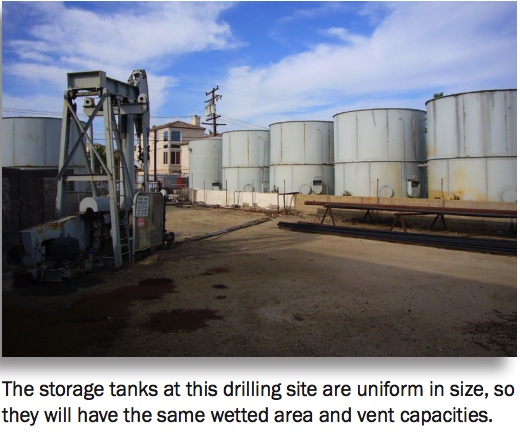 Where atmospheric, aboveground flammable and combustible liquid storage tanks rely solely on pressure-relieving devices for emergency venting, the vent capacity is based on the tank’s wetted area. (See Coffee Break Training FP-2013-4 for an explanation of wetted area.) The combined air flow capacity of the normal and emergency vents is measured in cubic feet per hour (m3/hour) of free flowing air through the venting assemblies. Once the wetted area is determined, minimum air flow volumes are found in the following table from National Fire Protection Association 30, Flammable and Combustible Liquids Code.
Where atmospheric, aboveground flammable and combustible liquid storage tanks rely solely on pressure-relieving devices for emergency venting, the vent capacity is based on the tank’s wetted area. (See Coffee Break Training FP-2013-4 for an explanation of wetted area.) The combined air flow capacity of the normal and emergency vents is measured in cubic feet per hour (m3/hour) of free flowing air through the venting assemblies. Once the wetted area is determined, minimum air flow volumes are found in the following table from National Fire Protection Association 30, Flammable and Combustible Liquids Code.
To apply the table, assume that your calculations have established that the wetted area of the tank under consideration is 900 feet2 (83.6 m2). From the table, the minimum amount of free air flow through the normal and emergency vents would be
493,000 feet3/hour (13,960.2 m3/hour).
